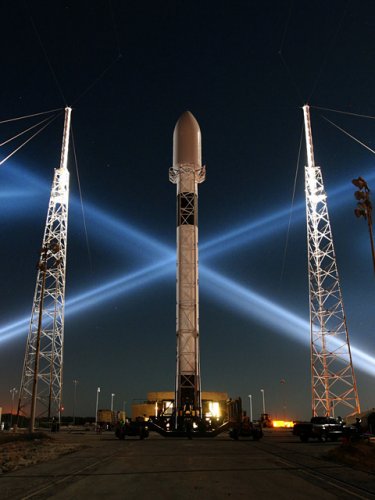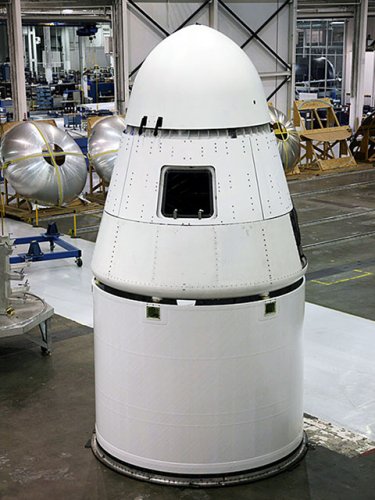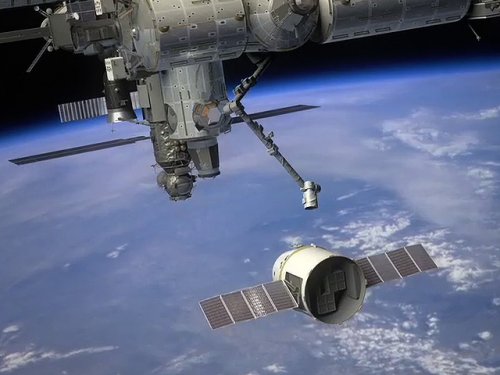RyanCrierie said:
I like how musk talks shit about how SpaceX is so awesome; but leaves out the fact that OSC got there far far before Musk ever did with their Taurus; an all solid rocket that can put 2,900 lb into orbit; and has been around since 1998 or so. But Taurus' first stage is an evil derivative of the Stage I motor for PEACEKEEPER, so is not "private". :

Also, Musk's speech is full of silicon valley technobabble buzz; a lot of words; but not very substantiative. For example, he talks about friction stir welding; leaving out the fact that it's used to make the Shuttle SRBs.
Putting the question into perspective helps with this. First we need to "clarify" your statement since you don't specify WHERE OSC got to "before" Musk ever did. Orbit?
That wasn't the "Taurus" that was the "Pegasus" LV which Orbital says was the first "privately" developed LV and first flew in 1990. (It should be noted that though Orbital lists the Pegasus as "privately" developed funding WAS provided through DARPA and the DoD for development under various contracts whereas the Falcon-1 was FULLY designed and developed with ONLY private funding. A major difference)
Pegasus-XL (current) version is capable of orbiting @1,000lbs and has the distinction of having the ONLY "fully-reusable" first stage which is the L-1011 "Carrier Aircraft" used to Air-Launch the Pegasus. Unfortunately this has not proved to be a commercially viable launch vehicle, leading Orbital to design and develop a "ground-launched" version with an added stage which is based on the Peacekeeper ICBM first stage.
The Taurus Launch Vehicle first stage is a Castor-120 which is currently used is a 'civilian-ized' production version of the Peacekeepr first stage. The Taurus-1 can put a little over 3,000lb into orbit but it was designed and developed using DARPA and DoD funding under contract to Orbital. Both due to design (all solid) and regulation (it was not in any sense a "privately funded" vehicle) and is not eligable for COTS. Orbital has begun to work around these issues with the concept of the Taurus-II which will be a duel Lox/Kerosene stage booster with a single solid rocket attached to the paylpoad.
Payload to the ISS is projected to be about 15,430lbs, IF the design ever gets built as Orbital is not finding investments to match the NASA funds as per COTS regulations. So far they have had to match funding from internal sources as has Space-X however unlike Space-X, Orbital has sought outside partnerships and investment to continue development and testing of the Taurus-II which has not as yet been overly successful nor allowed the company to reduce internal funding commitments.
Orbital also has designed and produced (again, under contract with the DoD and DARPA so not "private") the Minotaur series of Launch Vehicles based on demilitarized parts of the Minuteman ICBM of which only the Minotaur-I, IV and V are actual space launch. The Minotaur's II, and III are sub-orbital boost vehicle only and lack the power or systems to achieve orbit. Payload for the Minotaur-I is a little over 1,200llbs to LEO while the Minotaur-IV can place over 3,800lbs into LEO and by adding a 5th stage the Minotaur-V can transfer this amount to GEO.
Again because of non-private development and regulation neither of these qualify for COTS, nor ISS missions.
Comparatively the Falcon Launch Vehicle series has the Falcon-1 (original) orbiting a little over 925lbs. The current model of the Falcon-1 which has had the original Merlin-1A main engine replaced with the more powerful Merlin-1C can put @1,050lbs into LEO and the stretched and uprated Falcon-1e due out this year is projected to have a payload capability of excess of 2,200lbs. The Falcon-9 was actually a change of plans for Space-X since they had originally planned to incrementally move forward from the Falcon-1 to the medium lift Launch Vehicle the Falcon-V. However careful attention to market demand trends, and customer feedback suggested that there would only be a small market for the Falcon-V and that a more stable and lucrative market lay in designing and building the more powerful Falcon-9 with its over 23,000lb payload capacity.
The design and development process for the Falcon-9 was already underweigh when Space-X competed for the COTS contract, again the majority of the money coming from Space-X internal resources.
I'd also suggest before one 'dismiss' Musk's talk is to recall that even though it seems filled with "Silicon-Valley-Technobabble-Buzz" as you put it that Musk was one of the people who came UP with the language and those words. Unlike the majority of others in the beginning HE managed to not only survive but to thrive and even more-so you should remember that the same babble and buzzwords have become the standard speech of business around the world because at ONE point in history, people who PRACTICED as well as PREACHED the language ended up being highly successful AT business. As for being "substantive" or not it might be well to recall that Musk and Space-X IS being successful, competitive, and innovative in an industry who's business models have been stagnated for decades with competitiveness lost to inflated costs-of-operations and successive layers of bureaucracy and administration laid between customers and their needs and those actually producing the product.
One only need look at the differences between the commercial success of the Pegasus-XL or the Taurus-1 and Minotaur LVs and the Falcon-1/9 to see that there was and is a serious disconnect between the 'standard' aerospace company and the market.
If you recall there was a HUGE amount of discussion about Musk's decision to produce the Falcon-1 as a commercial launch vehicle instead of JUST a 'technology-demonstrator' since it had been 'proven' by Orbital's failure to make the Pegasus, Taurus, or Minotaur a commercial success that there OBVIOUSLY was NO market for smaller payloads to orbit. However after Space-X got to the point of actually offering launches the orders came rolling in, so much so that both Boeing and LockMart announced that they TOO would put "Falcon-1" class vehicles into service! LockMart is still halfheartedly supposedly pursuing plans to offer a Falcon-1 vehicle but Boeing dropped theirs when they realized they couldn't afford to compete. Orbital I suppose MIGHT have a chance since they are being provided with a large amount of relatively "inexpensive" components for their Taurus and Minotaur launch vehicles, but LockMart has NO chance to develop and produce a Falcon-1 class vehicle that is competitive since even their most MINIMUM costs even accepting huge losses to try and undercut Space-X out of the market don't "appeal" to customers.
And that right THERE is probably the biggest indicator of trouble for the bigger aerospace manufacturers: When your NAME doesn't "sell" your product anymore simply because it IS your name, how do you stay competitive?
Randy





